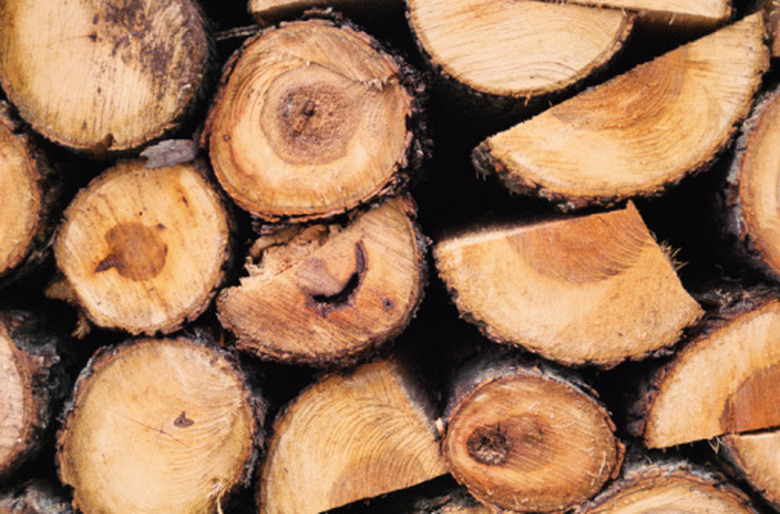How To Dry Firewood Quickly
Things Needed
-
Chainsaw
-
Axe or splitting maul
-
Wedges (optional)
-
Bucksaw or machete
-
Plastic sheeting or tarps
-
Tarpaper
Wet wood will not burn. Green, newly cut wood should be seasoned before it is dry enough to burn efficiently. Whether you are heating your home or trying to stay warm on a camping trip, dry firewood is essential for keeping your fire going and not gumming up your stovepipe. Green wood smolders and does not provide much heat. Sun and wind are the greatest tools for drying firewood, but there are a few techniques to help the process.
Stacking and Storing
Step 1
Remove branches from cut trees using a machete, bucksaw or chainsaw. Cut the wood into lengths that will fit into your woodstove or fireplace. Split the wood and stack it in a fashion that allows air to circulate between the pieces. Keep the cut wood out of direct contact with the ground. You may stack the bottom layer on a platform, pallets or a few scrap pieces of dimensional lumber. If you have huge rounds of green wood, place them on the uncut side for at least a few weeks before splitting. Very dense wood may be easier to split in winter, after the moisture in the wood freezes. Split wood dries more quickly than whole rounds.
Step 2
Leave the wood uncovered so the wind and sun can dry it more quickly. If it is raining or snowing, cover the top of the stack with a tarp, plastic sheeting or tar paper to keep rain and snow from touching the wood and dew from condensing on it. Plastic is a more impermeable barrier, but it will also stop condensation from evaporating. Tarpaper will keep light rain or dry snow from penetrating the wood and will allow air to circulate. Remove the plastic on sunny or windy days to allow green or wet wood to dry out.
Step 3
Bring a supply of firewood indoors one or two days before you need to burn it. Spread it out to allow air to circulate around all sides of the wood. If the wood is covered in snow or ice, check the floor after 15 to 30 minutes and mop up the melted snow. Turn the wood over or stand it on end. Start the fire using dry kindling and wood. Damp wood will dry out and burn once the fire is burning well. Adjust the damper so the wood burns and does not smolder.
Step 4
Find firewood as soon as you arrive at camp. Stack the wood under a tree, overhanging rock or other location where it will be as sheltered as possible. If it is raining or the wood is saturated from earlier precipitation, stack the wood so some is off the wet ground but air can still circulate around the pieces. Cover the wood with a tarp if you have one, or with pine boughs. Once you have a fire going, place wet pieces near the fire so the heat of the fire will dry them before you place them on the fire.
Tip
Ideally, green wood should cure for several months before burning. Try to cut or find dead wood to burn during the current season, and let the green wood cure until the following season.
Warning
Don't cut green trees or break branches off live trees when you are camping. The wood is too green to burn, and you will damage or kill the tree.
Don't leave firewood or any other combustible material unattended closer than 3 feet from your woodstove or screened fireplace. In the backcountry, never leave a fire unattended. Watch for sparks flying from the fire that may land on nearby pieces of firewood or other combustible material, such as pine needles, grass, twigs and dry leaves.
While it may be convenient to stack firewood on a porch or inside your garage, homeowners insurance companies may frown upon having a large supply of combustible material in or near the residence.
